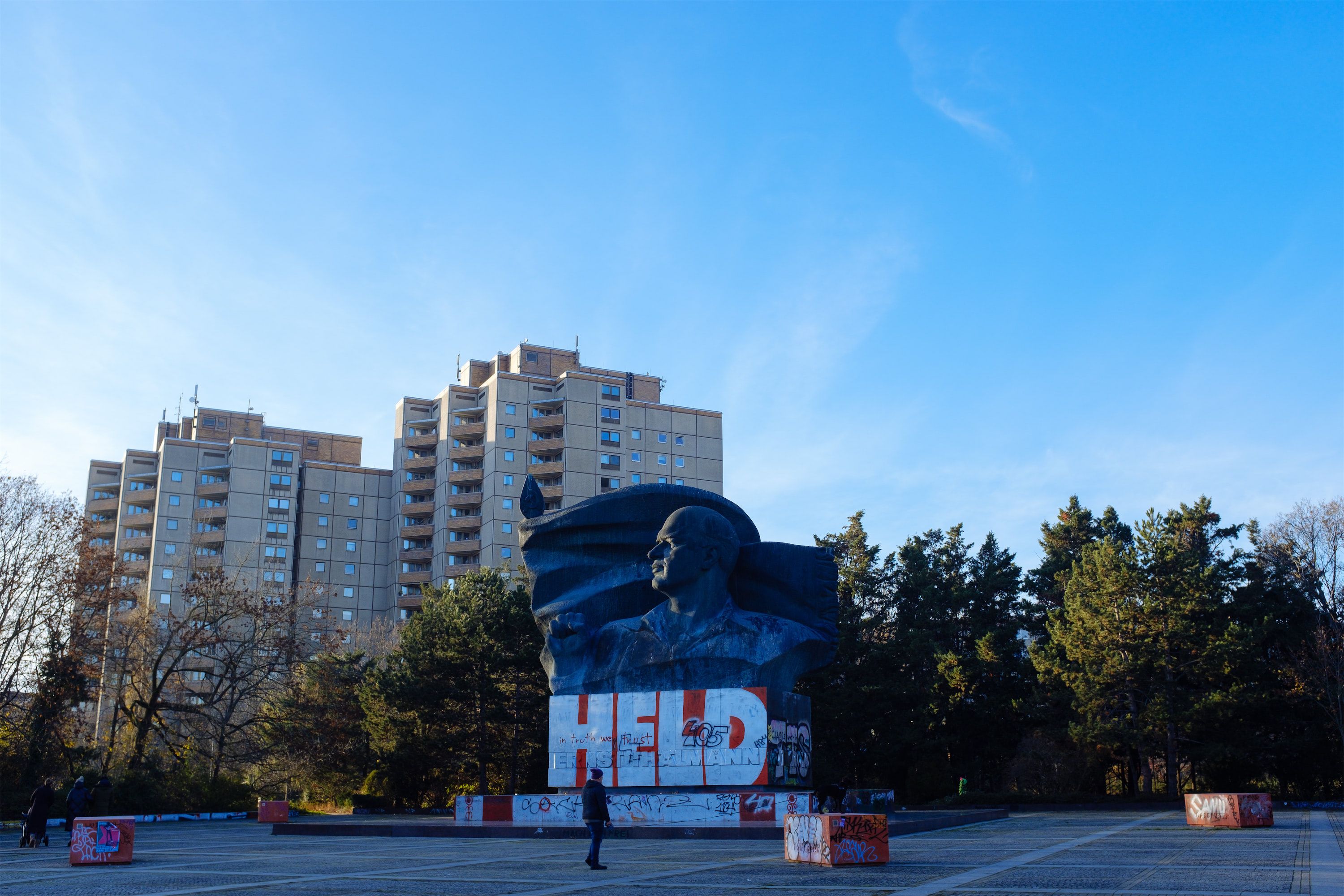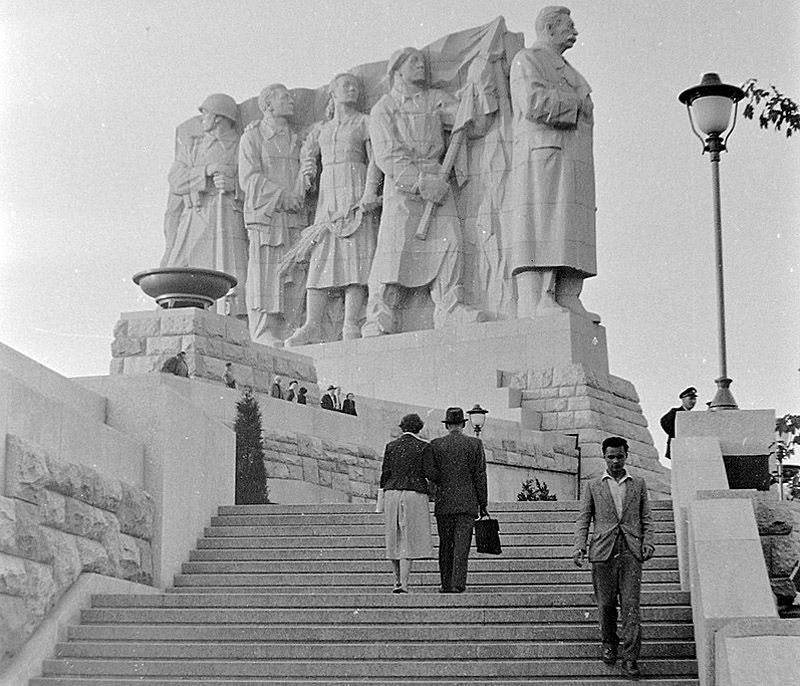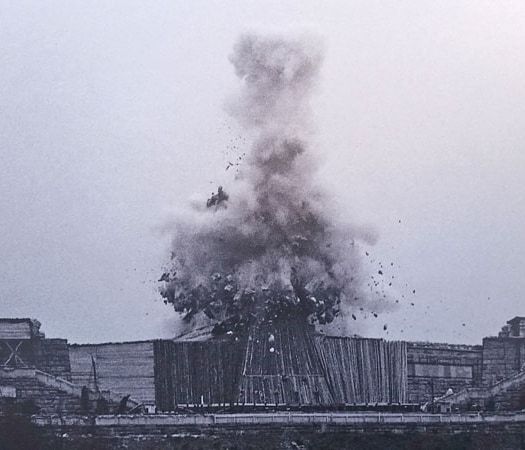Soviet Shadows
November 27, 2022 Berlin Moscow Socialism Ukraine Revisionism Culture Wars The Memory Palace History
Coming to terms with Socialist monuments in the light of current events.
Berlin often feels like the most Western of Eastern European cities, and in large part it’s the statues that create this impression. Where else in Western Europe can you walk through a public park and encounter a sprawling Soviet monument? Where else are the streets dotted with remnants of a former communist regime, from sunflower wall patterns to mosaic murals and the enormous TV tower? Even Karl-Marx-Allee, the central boulevard of East Berlin, serves as a giant open-air monument to a time long past.
Since moving to Berlin, I’ve always found these remnants fascinating, the way they clash with the fabric of German normalcy. As somehow coming from Western Germany, I couldn’t help but notice the modernist monuments, how different they’ve always looked from the classicist statues dotting the landscape in the West. To my eyes, they’ve always looked futuristic and passé at once—like something from a parallel universe.
For the longest time, that fascination seemed harmless: The Cold War ended before my memory even starts, and the clash of ideologies seemed like a thing of the past. These statues, often crumbling and graffitied, were monuments to a time I never experienced, which made them all the more harmless.
Neither Respect nor Reverence
When I wrote about Tatlin’s Tower earlier this year, I discovered that the monuments’ style, Socialist Modernism, had been deliberately prescribed. It was meant to look different, to signal a turning of the page and encapsulate the supposedly new spirit of the communist movement.
Yet from today’s vantage point, long after the Soviet experiment has failed, the monuments have become effectively meaningless. They no longer hold any power. This was never more obvious as when I visited NDK in Moscow, a park made of the retired statues dismounted during de-Stalinization. All grandiose in their designs, they seemed like carnival attractions standing next to one another. The monuments had lost their power, no longer demanding respect nor reverence.
 The monument in Ernst-Thälmann Park
The monument in Ernst-Thälmann Park
Then today, cycling past Ernst-Thälmann-Park, a monument stopped me in my tracks.
I had seen it a million times, the giant statue of labor leader Ernst Thälmann with a raised fist next to a communist star. But today, as it stood there bathing in the late afternoon sunshine, it irked me for the very first time.
Not because of the man in celebrates, but because of what the monument still represents: That East Germany used to be a satellite state of the Soviet Union, part of the global power structure by a repressive regime that had blanketed Eastern Europe with statues in an effort to homogenize the places it effectively occupied. And that the current regime in Russia was waging a brutal war in Ukraine to bring back part of that same power structure, still clinging on to the same Russian imperialism that had planted a monument in the center of Berlin.
It Reaches into the Present
Berlin’s conservative party has long asked for the monument to be dismounted. In their trademark populist style, they proposed “melting it down” and selling the scrap metal for the benefit of the city coffers.
But tearing down a monument has always felt like like the easy way out, like a quick fix to an overall, more fundamental problem. Take the park in Berlin: Even if you were to jettison the statue, the name of the park remains, the apartments in the park—constructed as a vanity project for the 40 year anniversary of the East German state—would stay in place. You can rename the park, pretend the statue was never there, but that doesn’t change why the site is there, and it doesn’t address the historical circumstances.
 Prague’s Stalin monument
Prague’s Stalin monument
 The monument, pulverized
The monument, pulverized
In fact, there are plenty of places across Berlin and Europe where they did remove the statues, and it tends to leave behind a curious void. The most intriguing of which is probably the case of Prague’s imposing Stalin monument, which was blown up during de-Stalinization. In its place, you can now find a creaky, oversized metronome.
I keep returning to an episode of The Memory Palace that makes the case for adding a plaque to the statue of a Confederate general in Tennessee. But really, the idea applies to monuments of all sorts:
First it should be big, the plaque. Not necessarily because there’s so much to say, though there is so much to say. But big enough to be noticed next to this rather grand monument. (…) Not just big for the sake of bigness, it needs to stick out. As something off. As something to disrupt the admirable balance of the statue, currently so tasteful.
(…)
Maybe it should just say (…) that the men who fought and died for the Confederate States of America, whatever their personal reasons, whatever was in their hearts, did so on behalf of a government formed for the express purpose of ensuring that men and women and children could be bought and sold and destroyed at will.
History matters to understand the present. And context matters to understand history. Maybe the monument at Ernst-Thälmann-Park needs a giant plaque the explains not only its past, but also how the long shadows of the past reach into the present.